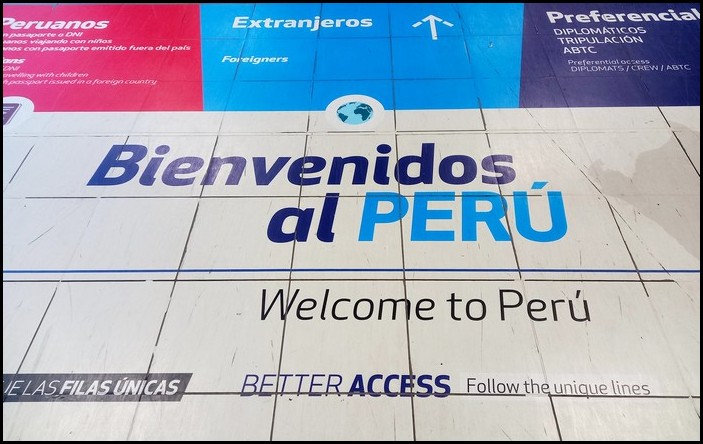
11 Interesting Facts about Lima – Peru
Four months ago, in February of 2022, I set out to explore South America for the very first time.
I started my adventures at Ecuador’s renowned Galapagos Islands, where I stayed for one month. Then I spent another two months exploring the central Andes region of Ecuador.
Next I visited Colombia for five weeks. I spent three weeks in wonderful, progressive Bogota and two weeks in icky, street-y Medellin.
Then last week I flew into Lima, Peru to begin exploring my third South American country. I plan to stay here in Lima about two weeks, visiting various museums, city parks, different neighborhoods and the miles-long cliff-top coastline parks.
Before heading to Lima I researched about the huge city’s attractions, geography and history. Now that I’m here in the city, I’ve learned even more, first hand.
Following are 10 of the most interesting things I’ve learned about Lima along the way…
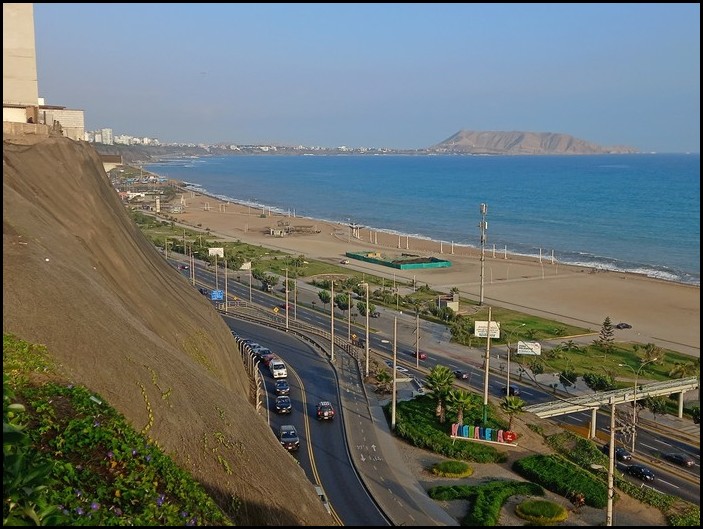
1. Lima sits on top of cliffs plunging down to the Pacific Ocean
I knew Lima was a big coastal city on the Pacific Ocean. But I was surprised and delighted to discover that Lima is perched on top of tall bulbous cliffs, much like Antalya, Turkey, one of my favorite cities in the world.
While Antalya’s sheer vertical cliffs plunge down directly into the sea, Lima’s bulging cliffs end at a flat, narrow coastal strip lined by miles and miles and miles of pebble beaches. In many areas those beaches are backed by grassy parks.
Quite happily for me, the city has created a series of huge parks along the clifftops, where people can enjoy spectacular coastal views, or walk, cycle, exercise their dogs, picnic and otherwise enjoy the spacious parklands.
2. Lima’s ocean front is famous for paragliding and surfing
Apparently the Pacific coast at Lima is often quite windy and the ocean rather pounding. The steady winds provide an ideal setting for paragliding off the tall cliffs and for surfing.
Every day that I’ve been out along the clifftops I’ve seen paragliders soaring up in the sky and surfers out in the ocean, mostly waiting for the right waves to come surging in.
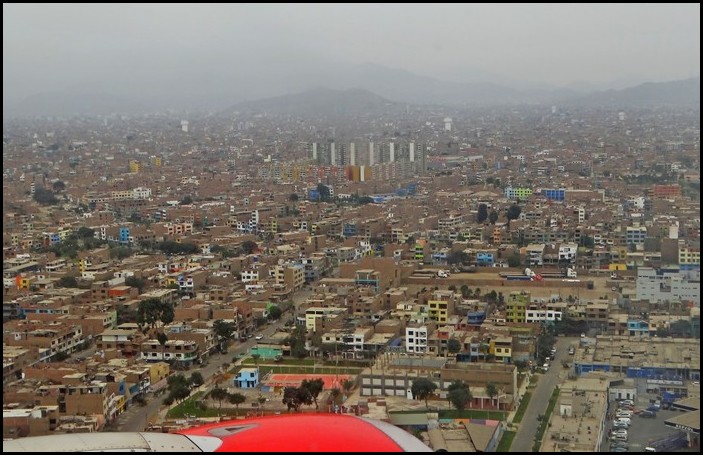
3. Lima is the world’ 2nd-largest desert city
Of all the things I learned about Lima, this was the most surprising and unexpected to me.
I knew that Lima, and many parts of Peru in general, have a dry arid climate. However, I did not know just how dry that meant.
In fact, I found out just how incredibly dry Lima is only when I arrived to Lima by plane. Looking out the window, I was astonished to see an incredibly dusty, dry desert-like city spreading out below me. The sky consisted of an opaque white air – or fog? – that completely obscured the further reaches of the vast city.
It immediately reminded me very much of Cairo, Egypt. That was definintely not a good sign: Cairo is my most hated city in the world, which I generally describe as a ‘Manmade Hell on Earth’ (sorry to you Cairo fans out there).
Amazingly, after I researched more about Lima’s climate during my first week here, I learned that Lima is the world’s second largest desert city. It was built on top of a vast desert wedged between the Andes mountains and the Pacific coast.
The world’s first biggest desert city is… Cairo, Egypt! I was not off the mark at all on my flight when Cairo promptly came to mind.
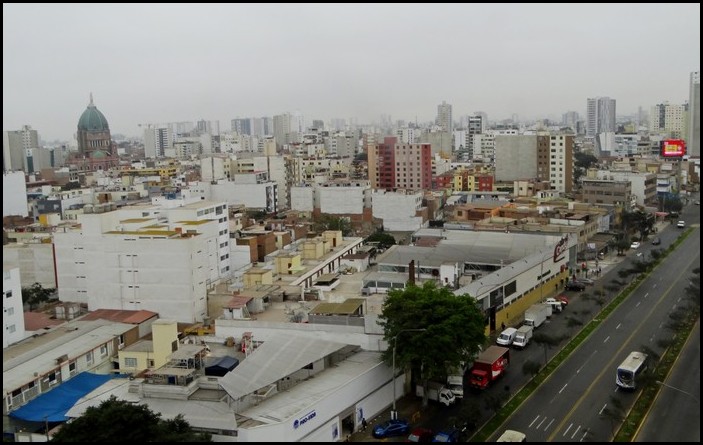
4. Lima is socked in by dense fog for several months each winter
I only learned about Lima’s notorious winter time fog a few days before my trip to Peru. I had originally planned to visit Peru in February, so I knew about Lima’s weather during spring months: warm to hot and sunny.
More recently, I had been tracking daily Lima’s weather online for a few weeks prior to my flight to Peru. According to all online weather sites, Lima’s daily weather was currently reaching the mid-70s F / 22-25 C, with sun and/or partial cloud cover every day. Based on that, I was guessing that this year Lima was just having an unusually warm and sunny June.
I left Medellin, Colombia expecting to land in an even warmer, sunnier climate than Medellin’s famous ‘year-round Spring’ weather. I had even packed my summer clothes in the top of my suitcase.
So I was mighty disappointed to see the city socked in by thick white fog when my flight arrived mid-afternoon. Eek.
Down in the city, I’m staying in a 16th-floor apartment a few blocks back from the clifftops. I have panoramic views over the sprawling city that stretches to the horizon in all directions…except that most of the city is completely obscured by thick white fog. Every day. Sigh.
Even within the city Lima reminds much of Cairo. Dry, dusty opaque air, much of the city lost in dust. At least in Lima, the city is all white – white buildings, white sky – whereas in Cairo the entire city is a dirty beige sand color.
Luckily, during the week I’ve been in Lima thus far, the fog has dissipated a few afternoons, with clear blue sky majically appearing and some weakish sun warming things up for a few hours.
But mostly it’s just thick white fog. Low-mid 60s F / 17-18 C, often Math a chilly wind blowing. Cold.
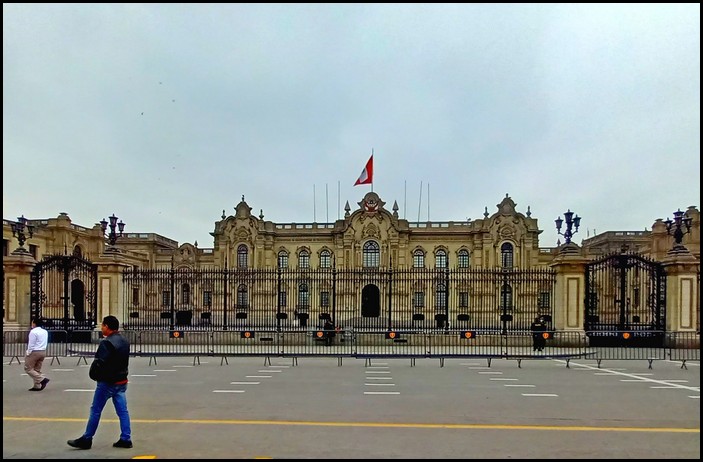
5. Lima was founded by Spaniard Francisco Pizarro in 1535
As everyone knows, the ruthless Spanish Empire took over most of the South American continent in the 1500s. Peru was no exception. In fact, it was one of the first regions to be conquered, and where the Spanish practically obliterated the indigenous Inca Empire they found there.
Lima, as its known today, was founded in 1535 by Pizarro, exactly on the site of a previous indigenous urban area. In fact, in more recent years, the remains of a 2000-year-old indigenous palace were discovered right under the Spanish-built Government Palace.
6. Lima’s nickname is ‘City of Kings’
Pizarro did not name the city Lima. He actually named it ‘Ciudad de los Reyes’, literally ‘City of the Kings’. There’s speculation about which kings he was referring to.
Eventually the city took on its present name of Lima. But ‘City of Kings’ remains its fond nickname.
7. During the 1500-1700s Lima was the Spanish Empire’s most important port
As a coastal city, Lima thrived over the 1600 and 1700s under Spanish dominion. It became the empire’s most important trading center and port on the South American Pacific coast.
8. Lima is the 4th largest city in South America
Lima now has a metropolitan population of well over 10.7 million inhabitants. That makes it a mega-city and South America’s fifth largest.
The continent’s three even larger mega-cities include Sao Paolo, Brazil; Rio de Jeneiro, Brazil; and Buenes Aires, Argentina.
Lima certainly looks and feels like a vast mega-city, sprawling out in every direction, as far as the eye can see. No matter where you look, you can’t begin to see the edge of the city (aside from the vast Pacific Ocean to the west).
9. Lima’s land area is a whopping 1032 square miles / 2676 square kms
Another factor in the size of a city besides its population is its actual land area. In the case of Lima, this incredibly huge city sprawls over an unimaginable 1032 square miles / 2676 square kms!
It’s no wonder you can look in any direction from within the city and never see an end.
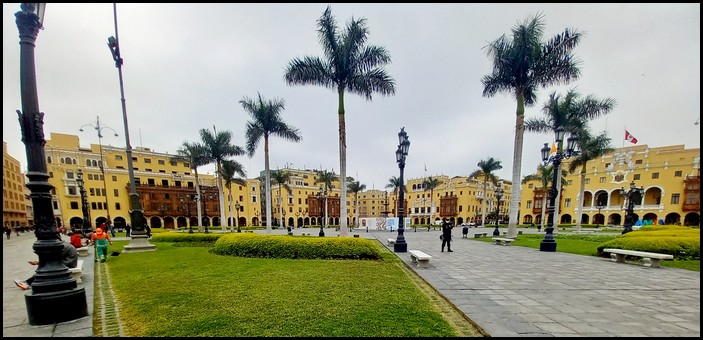
10. Lima’s historic district is a UNESCO World Heritage Site
Like many historic, Spanish-founded cities and towns in South America, Lima has a stunning historic center. A vast main plaza is lined by the stately Presidential Palace, the golden Municipal Palace (City Hall), the massive Cathedral of Lima and other beautiful colonial buildings.
In 1988 Lima’s historic center was named a UNESCO World Heritage Site, a label well deserved.
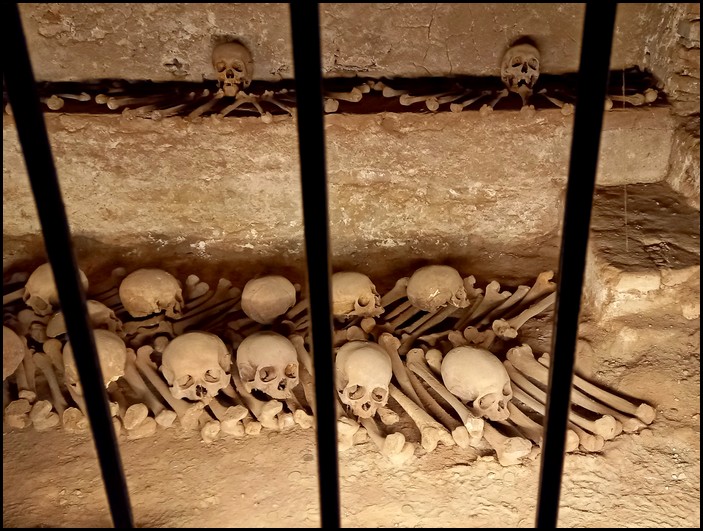
11. The catacombs of Lima’s San Francisco Monastery display the bones of more than 25,000 humans
One of the most famous – or notorious – historic churches in Lima’s historic center is San Francisco Monastery. It’s renowned for its macabre dungeon-like catacombs that display the bones of over 25,000 humans.
Underneath the church’s main chapel a series of narrow tunnel-like halls are lined by organized cases of bones. In some areas, human bones and skulls have been arranged into artist designs.
Nowadays, priests and monks of San Francisco Monastery who die while working/living there are still buried beneath the church.
================================
You might also enjoy:
7 Surprising Facts about Colombia
12 Surprising Facts about Galapagos Islands – Ecuador
===============================



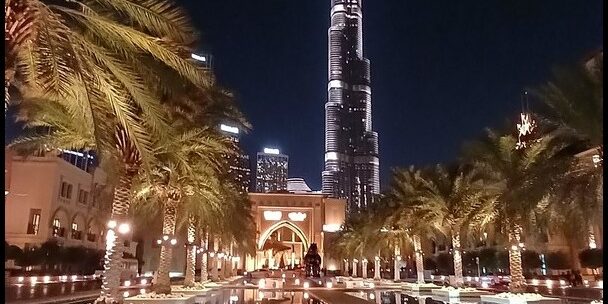



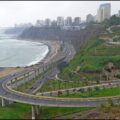
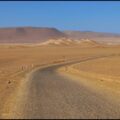



 Hi! I'm Lash, an American nomadic world traveler who's been traveling solo since 1998. I’m passionate about traveling the world nomadically and then sharing it all with you. I hope to inspire you to travel the world, to entertain you with tales from the road, and to help you reach your travel dreams. Welcome!
Hi! I'm Lash, an American nomadic world traveler who's been traveling solo since 1998. I’m passionate about traveling the world nomadically and then sharing it all with you. I hope to inspire you to travel the world, to entertain you with tales from the road, and to help you reach your travel dreams. Welcome! 




5 pings
6 Amazing Things to see & do in Lima – Peru - LashWorldTour
2022/07/06 at 6:18 am (UTC 8) Link to this comment
[…] « 11 Interesting Facts about Lima – Peru […]
All about Paracas National Reserve – Peru - LashWorldTour
2022/07/18 at 8:35 am (UTC 8) Link to this comment
[…] 11 Interesting Facts about Lima – Peru […]
All about Huacachina Oasis – Peru - LashWorldTour
2022/07/27 at 1:11 am (UTC 8) Link to this comment
[…] 11 Interesting Facts about Lima […]
12 Interesting Facts about Peru - LashWorldTour
2022/08/04 at 8:22 am (UTC 8) Link to this comment
[…] 11 Surprising Facts about Lima […]
33 Highlights of my South American Journeys - LashWorldTour
2024/01/21 at 10:54 am (UTC 8) Link to this comment
[…] Colombia I flew to Peru’s capital city, Lima. Overall I didn’t like Lima, mainly due to the absolutely awful weather and terrible traffic. […]